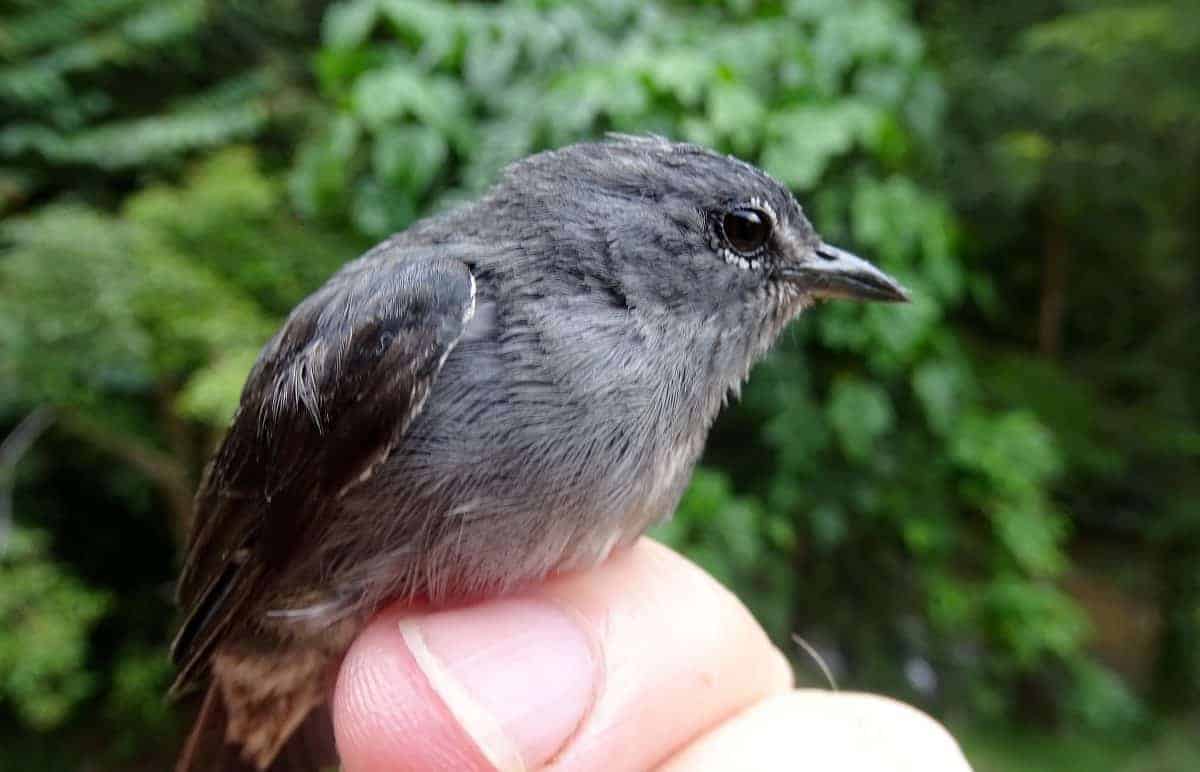
A “totally unique” bird first discovered in the shrinking forests of Borneo by a British birdwatcher has been confirmed as a new species.
The Spectacled Flowerpecker was first spotted in 2009 by a team including University of Leeds ornithologist Dr David Edwards
Now a team from the Smithsonian National Museum of Natural History in the US has become the first to capture and study the small, grey bird.
Their findings, published in the journal Zootaxa, confirm that the bird belongs to a colourful family of fruit-eating birds known as flowerpeckers, which are found throughout tropical southern Asia, Australia and nearby islands.
But, according to molecular analysis, the new species is not closely related to any other known flowerpecker.
Christopher Milensky, leader of the Smithsonian survey that led to the new discovery, said: “This bird is totally unique.
“It’s unlike anything else, and it is the latest example of the rich biodiversity that can be found in this region.”
The tropical island of Borneo in South East Asia is home to hundreds of species of birds, including dozens that can be seen nowhere else in the world.
But the Spectacled Flowerpecker has drawn major attention since it was first photographed and reported on by a group of birders in 2009.
The bird’s stout, pot-bellied body and stubby bill immediately suggested it was a flowerpecker.
But its distinctive facial markings – the prominent white arcs above and below the eyes that give the bird its spectacled appearance – were unfamiliar.
That group, which included Dr Edwards, dubbed the bird the Spectacled Flowerpecker and proposed that it might be a species new to science.
For the next 10 years, birds matching the description of the Spectacled Flowerpecker were spotted periodically in lowland forests around the island.
But it was not until earlier this year, when the American team found the elusive bird in a remote wildlife preserve in South Western Borneo, that scientists had an opportunity to study it directly.
The Smithsonian researchers were collaborating with Malaysia’s Sarawak Forestry Corporation to document the diversity of bird species living in the Lanjak Entimau Wildlife Sanctuary.
Their research site was miles from any reported Spectacled Flowerpecker sightings, so discovering one was unexpected.
But Mr Milensky said he recognised it immediately, adding: “I was fairly certain that’s what it was, and I knew it had not been formally described and documented.
“As soon as I saw it, I knew we had a new species of bird to describe.”
The researchers returned to the Museum to examine the bird closely, analysing its external features and comparing its DNA to that of other flowerpeckers.
Their genetic analysis turned up another surprise when they realised how distinct the new bird was from its family members.
Smithsonian team leader Jacob Saucier said: “It isn’t related to any of the other flowerpeckers all that closely.
“It’s a whole new species that distinctly stands out.”
Analysis of the bird’s diet showed that, like other flowerpeckers, the new species has been spotted eating mistletoe, a parasitic plant that grows high in the forest canopy.
Through DNA analysis and close inspection of seeds from the bird’s gut, the team was able to identify the type of mistletoe that the bird eats.
The information gives researchers a new perspective on this bird’s ecological needs and habitat preferences.
Mr Saucier added: “We think that wherever primary forest and mistletoe occur, there’s a good chance this bird could be there.”
The researchers hope their discovery will bring attention to the unexplored diversity that remains in the forests of Borneo – and the importance of conserving the threatened ecosystems.
The scientific name that the team chose for the Spectacled Flowerpecker, Dicaeum dayakorum, honors the Dayaks, the people who live in and are working to protect the island’s forests.